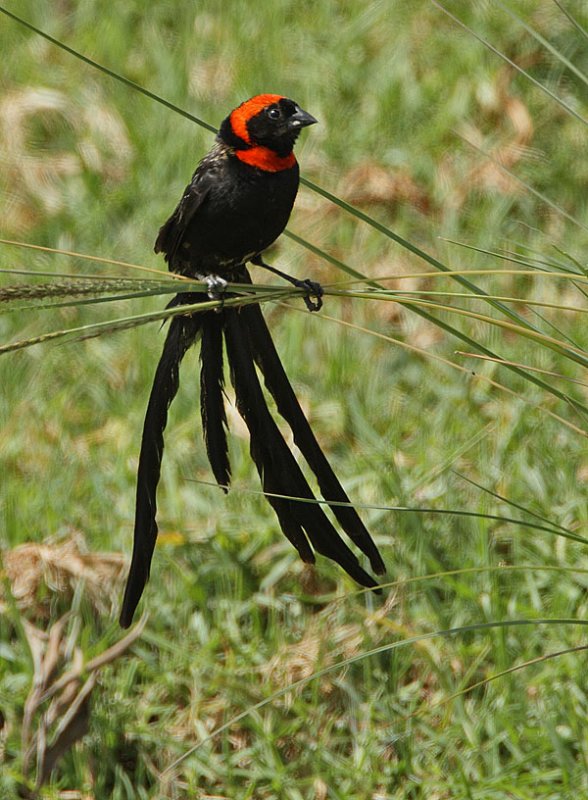
Euplectes ardens
SUBFAMILY
Ploceinae
TAXONOMY
Fringilla ardens Boddaert, 1783, Cape of Good Hope.
OTHER COMMON NAMES
English: Red-collared widow; French: Veuve noire; German:
Schildwida; Spanish: Obispo de Collar Rojo.
PHYSICAL CHARACTERISTICS
5.1 in (13 cm), with long tail 9.8–11.8 in (25–30 cm); female
0.6–0.7 oz (16–21 g), male 0.7–0.9 oz (20–25 g). Breeding male
black with long tail, red collar on upper breast, or red on head
and breast; some populations wholly black. Bill black. Female
brown with dark streaking above, yellowish eyebrow, underparts
buffy and unstreaked; bill brown. Non-breeding adult
male like female, but retains black wing feathers. Juvenile with
feathers of upperparts broadly edged buff.
DISTRIBUTION
Guinea east to Ethiopia, south to Angola and through Zambia
to eastern Zimbabwe and eastern South Africa.
HABITAT
Open or bushed grassland, cultivated areas; also highland
grasslands from 4,900–9,850 ft (1,500–3,000 m).
BEHAVIOR
Gregarious, forming large roosts even during breeding season,
feeding in flocks of 200 birds or more. Often associated with
other Euplectes.
FEEDING ECOLOGY AND DIET
Takes mainly seeds and insects, which may be hawked in the
air; rarely berries, nectar.
REPRODUCTIVE BIOLOGY
Territorial, polygynous, with males well-dispersed. Nest in tall
grass, a woven ball with side entrance. Frame started by male,
most building done by female. Breeding follows spring or summer
rains. Lays two to three eggs; incubation 12–15 days,
fledging 14–17 days. Female alone incubates and feeds young.
CONSERVATION STATUS
Not threatened; widespread in lowlands, but distinctive montane
populations have restricted range.
SIGNIFICANCE TO HUMANS
None known.
Other popular Animals
Photo Gallery of - Red-collared widow-bird




 Animalia Life
Animalia Life